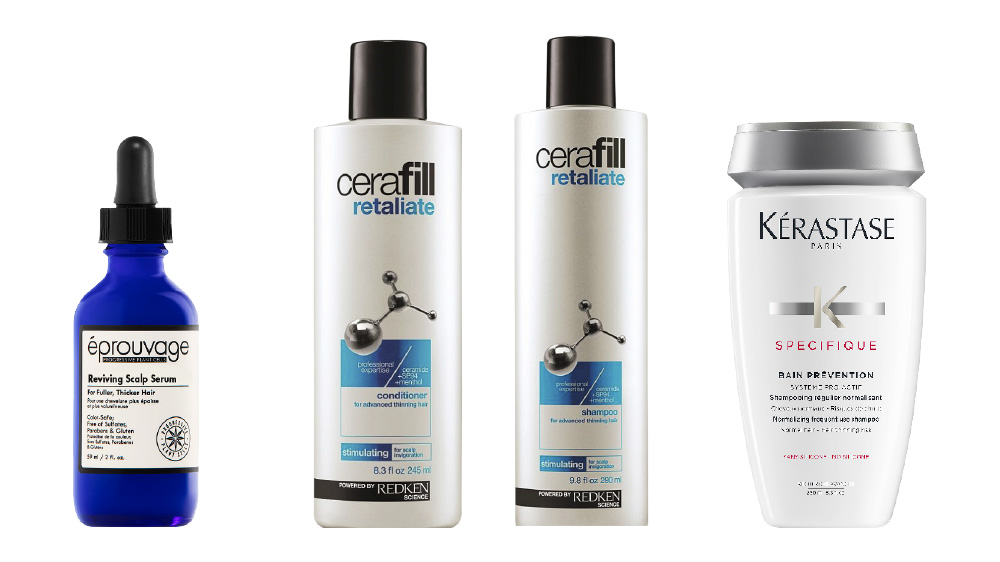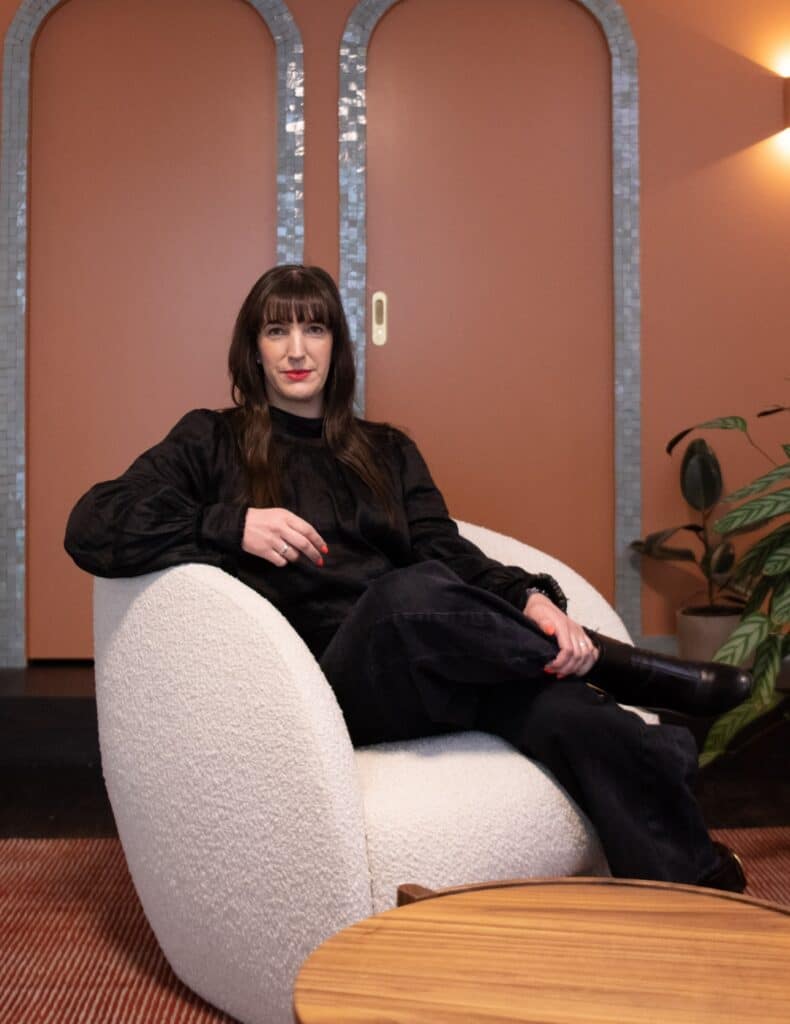Great hair is proven to make any day better, but dealing with thinning hair can knock your confidence. Megan Bedford looks at prevention and treatment options.
 Photo: Stephen Tilley. Styling: Kayla Jurlina.
Photo: Stephen Tilley. Styling: Kayla Jurlina.
Regardless of the type of hair you have or wish you had there are loads of bottles and sprays on the shelves to help you achieve a good hair day. But what if your strands are putting on a disappearing act? Volumising shampoo isn’t much use when most of yours is going down the drain. Given the long-held perception of lush, thick locks as our ‘crowning glory’, it’s not surprising that a change in volume can cause significant distress, and with hair thinning and loss a realistic result of the ageing process, we’re beginning to hear more about the issue from a female perspective.
“Women’s hair loss is definitely on the rise, with female clients nearly equalling male clients in number,” says Carla Hunt of Clive Hair Clinics. “Women are leading busier and more stressful lifestyles that are having a direct impact on their hair.”
It’s helpful to note the difference between fine hair and hair that’s thinning. The fineness of hair relates to the diameter of each strand, whereas if your hair is thinning, it means you have fewer strands than average per square centimetre on your head. If you’ve always had fine hair, you probably have your parents to thank, and although there are plenty of factors that can cause temporary hair loss, if your hair is beginning to thin, in many cases it also comes down to genetics — and it can be permanent.
How to stop your hair from thinning
“The age when hair thinning starts differs for women as there are many factors that can trigger and worsen hair loss,” says Carla. She lists factors such as stress, improper diet, nutritional deficiencies (particularly iron), medication (including that for depression), hormonal imbalances caused by conditions like polycystic ovary syndrome, and too much anaerobic exercise, which increases the male hormone testosterone.
The good news is that once they’re identified, many of these causes can be addressed so that loss can be minimised.
Feed your follicles
According to experts, diet plays a big part in healthy hair growth, so focus on achieving a balanced intake of nutrients. “We see a lot of vegans and vegetarians affected by hair loss due to iron deficiency,” says Carla Hunt of Clive Hair Clinics. Here are her top tips for supporting your strands:
Boost your protein intake Protein deficiency affects your tresses before other body tissues and can result in hair loss and breakage. Eggs, chicken and salmon are great sources of protein strengthening your follicles and promoting hair growth.
Include Amino Acids Amino acids play a vital part in promoting hair growth as they’re the building blocks for keratin production, the key structural element of our hair. Essential amino acids lysine and methionine can be found in garlic, onions, chicken, lamb and fish such as sardines.
ADD Selenium Brazil nuts are an excellent source of selenium, which is ultra-nourishing for your hair. Because New Zealand soil is low in selenium, we don’t get the amount we need from our homegrown fruit and vegetables. For healthy, shiny hair, source organic brazil nuts to add extra selenium to your diet.
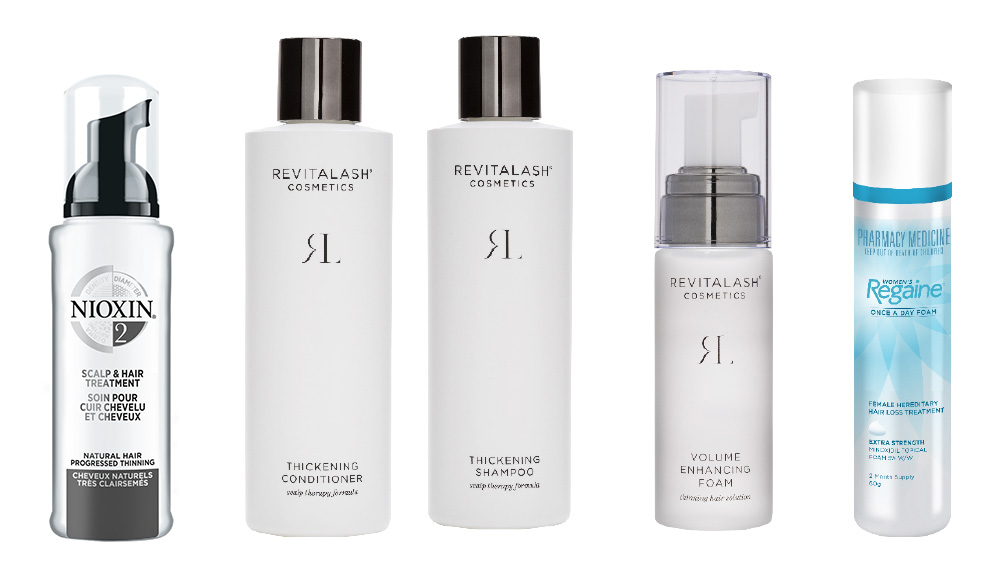
From top: Nioxin System 2 Scalp & Hair Treatment, $59. RevitaLash Cosmetics Thickening Shampoo and Conditioner, $53 each. RevitaLash Cosmetics Volume Enhancing Foam, $260. Women’s Regaine, $130 for a four-month supply.
Éprouvage Reviving Scalp Serum, $64. Redken Cerafill Retaliate Stimulating Shampoo, $34, and Conditioner, $36. Kérastase Specifique Bain Prevention, $43.
How to make your hair look thicker
“Currently, 30 percent of women experience female pattern thinning [which encompasses both of the above] before they reach the age of 30,” says Carla.
Because of the hormonal changes involved in thinning hair, the number of women impacted increases to more than 50 percent after menopause or after a hysterectomy, regardless of ethnicity or hair type.
Healthy Habits
- Use shampoo, conditioner and styling products designed for weak or thinning hair.
- Squeeze water from your hair gently, rather than drying it roughly with a towel.
- Hair is at its weakest when wet, so treat it gently using a wide-tooth comb. Dry hair before you go to bed as allowing the pillowcase to become damp regularly can cause the growth of bacteria that’s detrimental to your scalp.
- Skip wearing very tight ponytails, braids or buns every day or you risk traction alopecia, which is caused by prolonged repeated tension on the scalp.
- Regular brushing is fine, but try to avoid tugging at the roots.
- Use a good-quality hairbrush that won’t snag and pull.
- Keep heat styling to a minimum and avoid excessively hot temperatures.
- Colour treatments can weaken the texture and quality of your strands, so talk to your hairdresser about kinder options.
- Scalp massages have been found to improve circulation to the scalp, stimulating hair growth.
- Eat well, maintain a healthy weight, and get enough sleep and exercise.
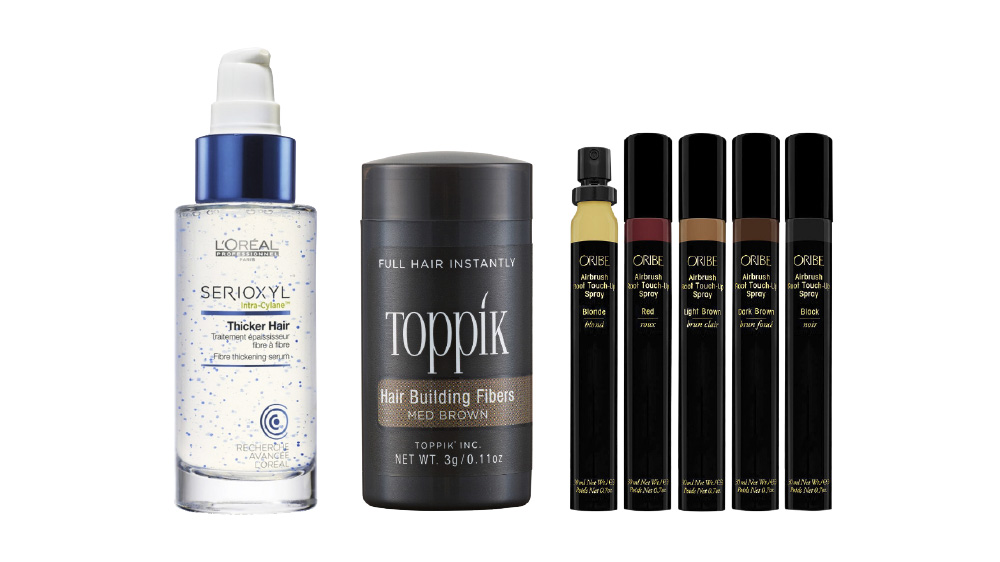
L’Oréal Professionnel Serioxyl Thicker Hair, $51. Toppik Hair Building Fibers, $40. Oribe Airbrush Root Touch-up Sprays, $49 each.
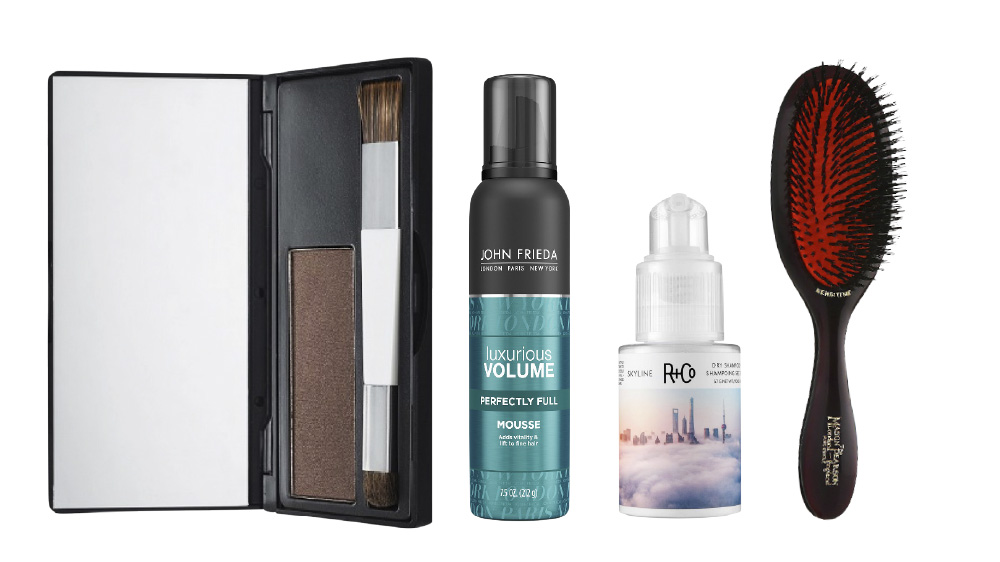
Beauty Dust Co Root Cover Up, $40. John Frieda Luxurious Volume Mousse, $20. R+Co Skyline Dry Shampoo Powder, $59. Mason Pearson Sensitive hairbrush, $290.
For those who are experiencing the more advanced stages of hair loss, other intensive options are being used in New Zealand clinics. These include injections of your own PRP (platelet rich plasma) into the scalp, and light therapy. The latter, sometimes called low-level laser therapy (LLLT), involves directing light energy into the hair follicles, which stimulates the cellular activity that’s believed to make ageing cells more active.
Although approaches to treating thinning hair vary, Carla suggests taking action as soon as you notice a difference in your locks. “Once hair follicles die, there’s no treatment available to get them back — that would be a cure for baldness, which doesn’t exist.”


